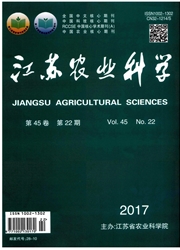

 中文摘要:
中文摘要:
血管支架植入后血栓及再狭窄依然是临床上的主要问题。通过材料表面仿生微环境的构建改善支架抗凝性能并加速血管内皮修复是解决上述问题的主要手段。研究表明,VEGF和SDF-1α均可有效介导血管内皮细胞的增殖与迁移。为比较两类因子在内皮化过程中的功能差异,选择在材料表面构建纤连蛋白/肝素功能层,并分别引入VEGF与SDF-1α两种因子,通过XPS和水接触角检测研究修饰表面的理化性质。体外动态释放实验结果显示,修饰层具有良好的控制因子释放的能力。体外细胞相容性评价结果显示,VEGF和SDF-1α均具有刺激内皮细胞增殖和迁移的功能,但VEGF表现出更强烈的调节内皮细胞行为的功能。
 英文摘要:
英文摘要:
Thrombosis and restenosis caused by vascular stent implantation remain major clinical problems. Biomimetic microenvironment construction of stent surface to improve the anticoagulant ability and accelerate re-endothelialization has been a main approach to solve above problems. According to recent research,both VEGF and SDF-1α were found to promote endothelial cells proliferation and migration effectively. To compare the stimulating effect of these two cytokines on endothelialization,VEGF or SDF-1α was incorporated into the fibronectin and heparin modified Ti surface,respectively. XPS and water contact angle assay were used to investigate physical-chemical properties of modified surfaces. The modified surface was found to control VEGF and SDF-1α release according to in vitro dynamic release results. In vitro cellular compatibility results indicated that both VEGF and SDF-1α might contribute to cell proliferation and migration. However,VEGF was found more effective in stimulating cell behavior compared with SDF-1α.
 同期刊论文项目
同期刊论文项目
 同项目期刊论文
同项目期刊论文
 In?uence of a layer-by-layer-assembled multilayer of anti-CD34 antibody, vascular endothelial growth
In?uence of a layer-by-layer-assembled multilayer of anti-CD34 antibody, vascular endothelial growth Immobilization of heparin/poly-l-lysine nanoparticles on dopamine coated surface to construct hepari
Immobilization of heparin/poly-l-lysine nanoparticles on dopamine coated surface to construct hepari Influence of a layer-by-layer-assembled multilayer of anti-CD34 antibody, vascular endothelial growt
Influence of a layer-by-layer-assembled multilayer of anti-CD34 antibody, vascular endothelial growt Covalent co-immobilization of heparin/laminin complex that with different concentration ratio on tit
Covalent co-immobilization of heparin/laminin complex that with different concentration ratio on tit The endothelialization and hemocompatibility of the functional multilayer on titanium surface constr
The endothelialization and hemocompatibility of the functional multilayer on titanium surface constr Endothelialization of implanted cardiovascular biomaterial surfaces: The development from in vitro t
Endothelialization of implanted cardiovascular biomaterial surfaces: The development from in vitro t Surface Modification with Dopamine and Heparin/Poly-L-Lysine Nanoparticles Provides a Favorable Rele
Surface Modification with Dopamine and Heparin/Poly-L-Lysine Nanoparticles Provides a Favorable Rele 期刊信息
期刊信息
